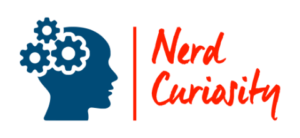Embarking on a career switch from a software engineer to a product manager can be as exhilarating as it is strategic. You’ve mastered the technical intricacies and thrived on the logical challenges that engineering unfolds. But now, you feel the urge to scale new heights, influencing product vision and user experience, taking a leap from the world of code to the broader canvas where market needs drive technological innovation.

To pivot to a product manager role, software engineers can leverage their engineering expertise, adapt to cross-functional leadership, and hone skills in market analysis and user empathy. It’s a journey from the specifics of how things are built, to the broader perspective of what should be built and why.
In the coming sections, expect to discover a roadmap to this transition—insights on internal transfers, the importance of mentorship, and key competencies for your new role. We’ll explore how your background as a software engineer provides a robust foundation for the multifaceted responsibilities of product management, ensuring you can navigate this professional shift with confidence and clarity.
Understanding the Roles

Embarking on a journey from software engineering towards product management necessitates a solid grasp of each role’s unique nature. Your understanding paves the way for a smoother transition, revealing how your existing skills can adapt and thrive in new, yet familiar landscapes.
Comparing the Responsibilities
Product management is a multidisciplinary role; you’ll be tasked with steering the product vision, defining the roadmap, and collaborating across departments. Your primary aim: ensure the product delights customers and meets business goals. Software engineering, on the other hand, focuses on the creation side. You dive deep into the technicalities, developing, testing, and maintaining the product’s very skeleton – its code. Here’s a quick comparison of distinct responsibilities:
| Software Engineering | Product Management |
|---|---|
| Writing and testing code | Defining product vision |
| Debugging software | Prioritizing features |
| Technical problem solving | Understanding customer needs |
| Optimizing performance | Coordinating between teams |
Identifying Transferable Skills
Stepping from the world of software engineering into product management does not mean starting from scratch. Many of the skills you honed while engineering are immensely valuable in product management. Abilities such as technical knowledge, analytical thinking, and an approach to problem-solving are universally in demand. Your technical background will empower you to communicate effectively with developers, understand the feasibility of potential features, and anticipate technical challenges. As you consider this career shift, being keenly aware of these commonalities will be a crucial advantage.
Developing Necessary Skills and Knowledge

Embarking on your journey from software engineer to product manager, you’ll need to hone a host of new skills and expand your knowledge. It’s not just about managing products; it’s also about spearheading teams, understanding the market, and strategically guiding projects to success.
Acquiring Product Management Expertise
To excel as a product manager, familiarize yourself with the fundamentals of product lifecycle management. Grasp the subtleties of user experience design and learn how to analyze market trends. Certifications in product management can be advantageous. They impart structured learning and acknowledged expertise in the domain. Resources like Product School help you gain a deeper understanding of the role.
Enhancing Leadership and Communication
Effective leadership is key to motivating and guiding teams towards a common goal. Strengthen your communication skills; clearly articulating your vision is vital. Seek a mentor if possible; they provide invaluable insights and guide your growth. Good communication isn’t just about speaking, but also about active listening and empathizing with others including your team, stakeholders, and customers.
Learning Business and Marketing Fundamentals
As a product manager, you’ll dabble in business acumen, including sales and marketing strategies plus financial forecasting. Know-how in project management and understanding of business models contribute significantly to achieving strategic objectives. Delve into courses that cover these key areas, and don’t shy away from books known for their strategic insights into the business world.
Gaining Practical Experience

To make the leap from software engineer to product manager, it is vital that you immerse yourself in situations that hone your product management skills. Launching into hands-on projects and absorbing wisdom through mentorship will exponentially grow your understanding of what it takes to excel in this new role.
Starting with Side Projects
Initiating side projects can serve as a practical training ground for aspiring product managers. By doing so, you have the opportunity to explore the product development process firsthand. It begins with identifying a problem or a need, after which you can outline a potential solution and develop a prototype. Here are a few steps to consider:
- Conceptualize: Start with a clear vision of the end product.
- Design: Sketch out basic designs or user flows.
- Develop: Build a minimal viable product (MVP) to gather early user feedback.
- Iterate: Refine your product based on the feedback received.
Involvement in these projects can also include small-scale management of cross-functional teams, depending on the complexity of the project, which prepares you for larger-scale endeavors.
Seeking Mentorship and Feedback
Mentorship is an invaluable asset in your journey to becoming a product manager. Engaging with a mentor who has traversed the path you’re on can give you insights into the nuances of the role. Mentorship can come in various forms:
- One-on-one sessions where you can ask questions and seek advice.
- Shadowing opportunities that allow you to observe the day-to-day responsibilities of a seasoned product manager.
- Feedback loops for your side projects, where a mentor can offer critical evaluations and improvements.
Gather different viewpoints from mentors who have worked with diverse cross-functional teams, as this will expose you to a wide range of product management styles and techniques. Feel free to step into the role of a de-facto PM for existing projects within your current job, using these projects to seek mentor feedback and grow your experience.
Building a Network and Credibility

In transitioning to a product manager, your ability to forge relationships and establish a reputation within the industry can be a game-changer.
Networking within the Industry
Establishing a robust professional network is vital. As a software engineer, you likely have a technical network, but it’s important to broaden this to include leadership roles such as CTOs and CEOs. Engage in industry events, connect on professional platforms, and actively participate in discussions. By collaborating with cross-functional teams and other stakeholders, you demonstrate your communication skills and develop a holistic understanding of business needs.
Demonstrating Thought Leadership
To build credibility, share your insights on problem-solving and project management. Writing articles or speaking at conferences can position you as a thoughtful leader. This exposure will not only validate your expertise but also showcase your ability to drive innovation. When you contribute valuable ideas, you pave your path towards a leadership role; remember, being seen as a resource by your peers amplifies your professional stature.
Making the Transition

Shifting from a software engineer to a product manager can be an exhilarating step forward in your career. Whether through an internal transfer within your current organization or seeking job opportunities elsewhere, each path requires strategic planning and a keen understanding of the unique challenges ahead.
Evaluating Internal vs. External Opportunities
Considering a move within your current company often aligns with ease and familiarity. It allows you to leverage existing relationships and your knowledge of the company’s culture and processes. When contemplating an internal transfer, approach an internal advocate who can support your transition. Conversely, seeking a role at a different company broadens your professional landscape but requires thorough research into each company’s culture and the specific demands of their product management roles.
- Internal Transfer:
- Leverage company knowledge
- Utilize internal networks
- External Transfer:
- Broaden professional experience
- Navigate new environments
Preparing for the Interview Process
When you’re ready to pursue your dream role, preparing for the interview process is critical. The interview process often focuses on assessing both technical expertise and strategic thinking skills. Prepare to articulate your experiences in software engineering and how they translate to product management. Highlight leadership experiences, any cross-functional projects you’ve led or contributed to, and how you’ve managed product lifecycles or feature development.
- Interview Preparation Checklist:
- Review job descriptions and tailor experiences accordingly
- Prepare examples of leadership and strategic thinking
- Practice common interview questions specific to product management
Remember, a career change like this is more than a simple job switch—it’s a career shift that can open doors to new job opportunities and challenges. While the journey isn’t always straightforward, your determination and preparation can help you make this pivotal move.
Continuing Professional Development

As you navigate the path from software engineer to product manager, embrace continuous learning and set clear career goals. It’s about equipping yourself with new tools and knowledge while envisioning where you want your career to soar.
Leveraging Continuous Learning
Lifelong learning is not just a buzzword; it’s a must for your role transition. Consider embarking on an MBA to solidify your business acumen. Not every product manager has one, but it certainly can give you an edge in understanding complex business strategies and operations. Additionally, seeking out mentoring relationships can accelerate your growth. Having a mentor means you have a seasoned guide to navigate the subtleties of product management that you won’t learn from books.
Setting Long-term Career Goals
Outline your career aspirations with clarity. Do you see yourself leading product development for cutting-edge technologies, or are you more inclined towards managing enterprise-level product portfolios? Either way, your career placement ambitions should align with personal development initiatives. This could mean seeking out positions that offer room for growth or companies that emphasize career development. Remember, these goals are not static; revisit and revise them as you evolve in your product manager journey.
Conclusion

Embarking on the journey to become a Product Manager from a software engineering background is both exciting and demanding. It requires a diverse skill set and a strategic mindset. You’ll find it imperative to understand user needs thoroughly and prioritize features that align most with business goals. Your technical expertise will be a valuable asset in this new role, enabling you to communicate effectively with your engineering team.
Your path should include:
- Building a network with industry professionals and peers.
- Engaging in projects that showcase your burgeoning PM skills, perhaps starting within your current organization.
Remember that a positive attitude and readiness to learn are your biggest allies. Prepare to embrace challenges as opportunities to grow and innovate. In due course, your evolution from engineer to product manager will shape you into a leader with the capabilities to steer product vision to success.
